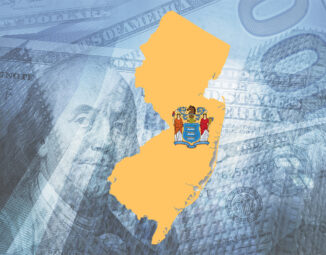IRS Setting Up to Crackdown on Improperly Forgiven PPP Loans
The IRS recently released a news bulletin highlighting the Chief Counsel Advice (CCA 202237010) that was issued to address whether a taxpayer whose paycheck protection program (PPP) loan was forgiven even though that taxpayer did not qualify for the forgiveness must include the PPP loan proceeds in income. The CCA unequivocally confirmed that when a taxpayer’s PPP loan is forgiven based on misrepresentations or omissions of fact, that taxpayer is not eligible to exclude the loan amount from income, but instead must include in income the portion of the loan amount that was forgiven based on the misrepresentations and omissions.
The IRS as part of the news bulletin encouraged taxpayers who inappropriately obtained forgiveness of their PPP loans to take steps to become compliant by filing amended returns to include a portion of the forgiven loan amount in income. The IRS went on to warn taxpayers from abusing the PPP because the IRS will consider “all available treatment and penalty streams to address the abuses.”
Many may remember, there were two rounds (or draws) of PPP loans. The first round of loans was provided by the Coronavirus Aid, Relief and Economic Security Act passed in March 2020, also known as the CARES Act. The purpose of the PPP loans was to help small businesses that were adversely affected by the COVID-19 pandemic pay payroll costs and other eligible business expenses. The second round of loans was provided by the Economic Aid to Hard-Hit Small Businesses, Nonprofits, and Venues Act passed in December 2020, also known as the Economic Aid Act. The Economic Aid Act amended and extended the PPP provisions initial set forth in the CARES Act.
Under the terms of the PPP, lenders may forgive the full amount of the PPP loan if taxpayers meet the following conditions:
- The taxpayer was eligible to receive the PPP loan. A taxpayer was eligible if it:
- (i) was a small business concern, independent contractor, eligible self-employed individual, sole proprietor, business concern, or a certain type of tax-exempt entity,
- (ii) was in business on or before February 15, 2020, and
- (iii) had employees or independent contractors who were paid for their services, or was a self-employed individual, sole proprietor or independent contractor.
- The PPP loan proceeds were used to pay eligible business expenses, such as payroll costs, rent, interest on the business’ mortgage, and utilities.
- The taxpayer applied for PPP loan forgiveness where it attested to eligibility, verified that the loan proceeds were properly spent, and met other legal qualifications.
The Small Business Administration (SBA) may review the PPP loan to determine whether the loan forgiveness was a qualifying forgiveness even after the lender had granted forgiveness to the taxpayer. If the SBA later determines that a loan forgiveness was not a qualifying forgiveness the SBA may seek repayment of the PPP loan and impose civil and/or criminal penalties on the taxpayer.
The CCA and the news bulletin confirms what most tax practitioners already suspected. That is, when a taxpayer’s PPP loan is forgiven based on misrepresentations or omissions of fact, that taxpayer is not allowed to exclude the loan proceed from income. With this guidance in place, the IRS will have more legal grounds to force the inclusion of the loan proceeds in income when a PPP loan is improperly forgiven.
The information contained in this publication should not be construed as legal advice, is not a substitute for legal counsel, and should not be relied on as such. For legal advice or answers to specific questions, please contact one of our attorneys.



